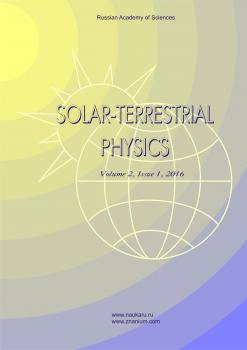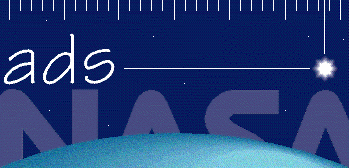Yakutsk, Russian Federation
Yakutsk, Russian Federation
A catalog of isolated substorms in 2016–2020 has been compiled from data on the H component of the geomagnetic field, obtained at Tixie. From the catalog data, it has been found that during this period changes in the number of substorms and the number of sunspots are well approximated by quadratic functions with minima at the end of 2017 and in the middle of 2019 respectively; during the year, disturbances more often occurred during solstice; within 24 hours, substorms more often occurred at local midnight. The intensity and duration of substorm disturbances, the duration of their expansion phase do not show a noticeable dependence on the time of occurrence; however, from average values of these parameters in hourly ranges, it has been found that the intensity takes lower values around 0–3 MLT; in the midnight sector, the duration of disturbances and the duration of their expansion phase are shorter than those in the dawn sector. Compared to the data from mid-latitude stations [Chu et al., 2015], the average duration of substorms and the duration of their expansion phase are longer.
substorm, geomagnetic variations, fluxgate magnetometer
1. Akasofu S.-I. The development of the auroral substorm. Planet. Space Sci. 1964, vol. 12, pp. 273-282.
2. Baishev D.G., Moiseyev A.V., Boroyev R.N., Makarov G.A., Poddelsky I.N., Poddelsky A.I., Shevtsov B.M., Yumoto K. MAGDAS international project: first results of geomagnetic observations in the territory of Yakutia. Nauka i obrazovanie [Science and Education]. 2013, no. 1 (63), pp. 7-10. (In Russian).
3. Borovsky J.E., Nemzek R.J., Belian R.D. The occurrence rate of magnetospheric substorm onsets: Random and periodic substorms. J. Geophys. Res. 1993, vol. 98, A3, pp. 3807-3813. DOI:https://doi.org/10.1029/92JA02556.
4. Chu X., McPherron R.L., Hsu T.-S., Angelopoulos V. Solar cycle dependence of substorm occurrence and duration: Implications for onset. J. Geophys. Res. 2015, vol. 120, pp. 2808-2818. DOI:https://doi.org/10.1002/2015JA021104.
5. Feldstein Ya.I. Some questions of the morphology of auroras and magnetic disturbances at high latitudes. Geomagnetism i Aeronomiya [Geomagnetism and Aeronomy]. 1963, vol. 3, no. 2, pp. 227-239. (In Russian).
6. Frey H.U., Mende S.B., Angelopoulos V., Donovan E.F. Substorm onset observations by IMAGE-FUV. J. Geophys. Res. 2004, vol. 109, A10304. DOI:https://doi.org/10.1029/2004JA010607.
7. Gjerloev J.W. The SuperMAG data processing technique. J. Geophys. Res. 2012, vol. 117, A09213. DOI: 10.1029/ 2012JA017683.
8. Kamide Y., Perreault P.D., Akasofu S.-I., Winningham J.D. Dependence of substorm occurrence probability on the interplanetary magnetic field and on the size of the auroral oval. J. Geophys. Res. 1977, vol. 82, pp. 5521-5528. DOI:https://doi.org/10.1029/JA082i035p05521.
9. Khorosheva O.V. Diurnal drift of a closed auroral ring. Geomagnetism i Aeronomiya [Geomagnetism and Aeronomy]. 1962, vol. 2, no. 5, pp. 839-850. (In Russian).
10. Liou K., Newell P.T., Sibeck D.G., Meng C.-I., Brittnacher M., Parks G. Observation of IMF and seasonal effects in the location of auroral substorm onset. J. Geophys. Res. 2001, vol. 106, pp. 5799-5810.
11. Liou K., Newell P.T., Zhang Y-L., Paxton L.J. Statistical comparison of isolated and non-isolated auroral substorms. J. Geophys. Res. 2013, vol. 118, pp. 2466-2477. DOI: 10.1002/ jgra.50218.
12. McPherron R.L. Growth Phase of Magnetospheric Substorms. J. Geophys. Res. 1970, vol. 75, no. 28, pp. 5592-5599.
13. McPherron R.L., Chu X. The mid-latitude positive bay index and the statistics of substorm occurrence. J. Geophys. Res. 2018, vol. 123, pp. 2831-2850. DOI:https://doi.org/10.1002/2017JA024766.
14. Newell P.T., Gjerloev J.W., Mitchell E.J. Space climate implications from substorm frequency. J. Geophys. Res. 2013, vol. 118, pp. 6254-6265. DOI:https://doi.org/10.1002/jgra.50597.
15. Sandhu J.K., Rae I.J., Freeman M.P., Gkioulidou M., Forsyth C., Reeves G.D., Murphy K.R., Walach M.-T. Substorm-ring current coupling: a comparison of isolated and compound substorms. J. Geophys. Res. 2019, vol. 124, pp. 6776-6791. DOI:https://doi.org/10.1029/2019JA026766.
16. Sergeev V.A., Tsyganenko N.A. Magnitosfera Zemli [The Earth’s Magnetosphere]. Moscow, Nauka Publ., 1980, 174 p. (In Russian).
17. Sergeev V.A., Angelopoulos V., Nakamura R. Recent advances in understanding substorm dynamics. Geophys. Res. Lett. 2012, vol. 39, L05101. DOI:https://doi.org/10.1029/2012GL050859.
18. Tanskanen E.I. A comprehensive high-throughput analysis of substorms observed by IMAGE magnetometer network: Years 1993-2003 examined. J. Geophys. Res. 2009, vol. 114, A05204. DOI:https://doi.org/10.1029/2008JA013682.
19. Vorobjev V.G., Yagodkina O.I., Zverev V.L. Investigation of isolated substorms: Generation conditions and characteristics of different phases. Geomagnetism and Aeronomy. 2016, vol. 56, pp. 682-693. DOI:https://doi.org/10.1134/S0016793216060165.
20. Vorobjev V.G., Yagodkina O.I., Antonova E.E., Zverev V.L. Influence of solar wind plasma parameters on the intensity of isolated magnetospheric substorms. Geomagnetism and Aeronomy. 2018, vol. 58, pp. 295-306. DOI:https://doi.org/10.1134/S0016 793218030155.
21. URL: https://spdf.gsfc.nasa.gov/pub/data/omni/ (accessed July 5, 2023).
22. URL: https://wdc.kugi.kyoto-u.ac.jp/wdc/Sec3.html (accessed July 5, 2023).
23. URL: http://www.wdcb.ru/stp/data/solar.act/sunspot/ (accessed July 5, 2023).

















